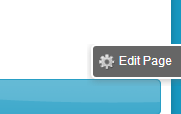We’ve just deployed Skuid to an OEM customer, and applied the ‘Skuid Page Viewer’ permission set to all users, incl the Administrator. We would prefer them to not be able to edit our Skuid pages (at least in the early stages) ( so no one gets the builder permission set)
However, the edit/gear button is still showing for the Administrator, and he’s been able to click and edit the page.
Unfortunately its too late to apply the apex class & trigger outlined at the bottom here http://help.skuidify.com/m/11217/l/121145-packaging-your-skuid-pages as the app has already passed sec review and we’re technically not able to add another class in at this point…
Any suggestions as to how to prevent the admin from seeing this button?
Thanks.
Question
Remove gear page edit button for OEM customer system Admin?
 +8
+8This topic has been closed for replies.
Enter your E-mail address. We'll send you an e-mail with instructions to reset your password.








